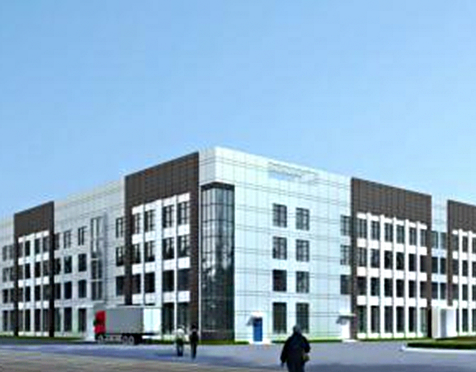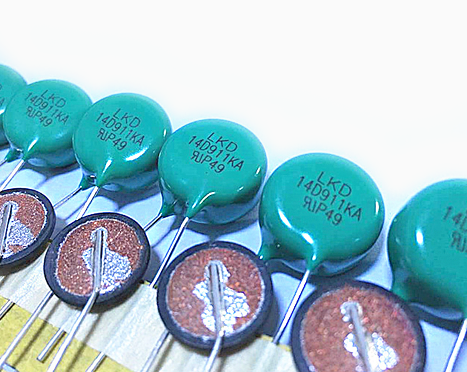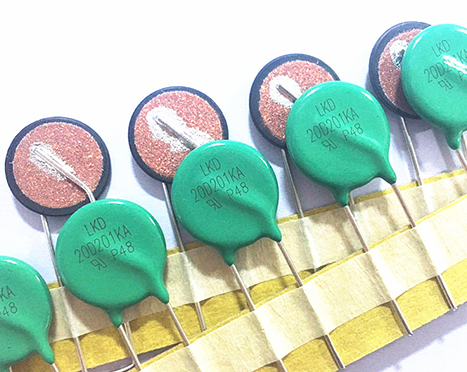11 Main Parameters of Varistor that Must be Clear
issuing time :2022-06-27
The biggest feature of the varistor is that when the voltage applied to it is lower than its threshold "UN", the current flowing through it is extremely small, which is equivalent to a closed valve. When the voltage exceeds UN, its The resistance value becomes smaller, so that the current flowing through it surges and the influence on other circuits does not change much, thereby reducing the influence of overvoltage on subsequent sensitive circuits. Using this function, the abnormal overvoltage that often occurs in the circuit can be suppressed, and the circuit can be protected from the damage of the overvoltage. Varistors are widely used in household appliances and other electronic products for overvoltage protection, lightning protection, surge current suppression, spike absorption, amplitude limiting, high-voltage arc extinguishing, noise elimination, and protection of semiconductor components.
The main parameters of varistor are nominal voltage, voltage ratio, maximum control voltage, residual voltage ratio, current capacity, leakage current, voltage temperature coefficient, current temperature coefficient, voltage nonlinear coefficient, insulation resistance, static capacitance, etc.
1. Nominal Voltage Nominal voltage is the voltage across a varistor when a 1mA DC current is passed.
2. The voltage ratio refers to the ratio of the voltage value generated when the current of the varistor is 1mA to the voltage value generated when the current of the varistor is 0.1mA.
3. Maximum limit voltage The maximum limit voltage refers to the highest voltage value that can be endured across the varistor.
4. Residual voltage ratio When the current flowing through the varistor is a certain value, the voltage generated across it is called the residual voltage. Residual Voltage Ratio The ratio of residual voltage to nominal voltage.
5. Flow capacity Flow capacity, also known as flow capacity, refers to the maximum pulse (peak) current value that is allowed to pass through the varistor under specified conditions (with a specified time interval and number of times, applying a standard impulse current).
6. Leakage current Leakage current and waiting current refer to the current flowing through the varistor under the specified temperature and maximum DC voltage.
7. Voltage temperature coefficient The voltage temperature coefficient refers to the rate of change of the nominal voltage of the varistor within the specified temperature range (temperature is 20~70°C), that is, when the current through the varistor remains constant, the temperature changes by 1°C The relative change across the varistor.
8. Current temperature coefficient The current temperature coefficient refers to the relative change of the current flowing through the varistor when the temperature changes by 1°C when the voltage across the varistor remains constant.
9. The voltage nonlinear coefficient refers to the ratio of the static resistance value to the dynamic resistance value of the varistor under the action of a given applied voltage.
10. Insulation resistance Insulation resistance refers to the resistance value between the lead wire (pin) of the varistor and the insulating surface of the resistor body.
11. Static capacitance Static capacitance refers to the inherent capacitance of the varistor itself.








